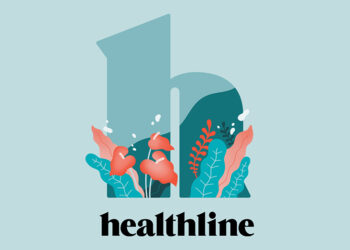By now, you’ve likely heard of the emerging care model of “hospital-at-home,” which enables patients who require acute hospital care to receive it in the comfort of their own homes. Given persisting healthcare worker shortages, hospital closures, and increasing costs of care, innovative patient care models are essential.
Several studies have shown considerable benefits from this model. Recent research has found that hospital-at-home can reduce costs, improve patient outcomes, and optimize patients’ experience. Furthermore, patients who receive hospital-at-home services are reported to have an improved emotional state when cared for with their loved ones and pets present during recovery.
But there are potential downsides too — and they aren’t being talked about nearly enough.
Healthcare systems that implement hospital-at-home establish eligibility criteria to determine which patients are a good fit and can receive care safely. But does the eligibility criteria come down to the haves and have nots? Before a patient is transferred to be cared for at home, a primary caregiver — often a family member — is assessed for competence to care for the patient, and a case manager or social worker assesses the home environment for safe and suitable conditions. This means hospital-at-home isn’t an option for all patients. At the same time, all “suitable” environments are not necessarily equal, meaning not all patients have the resources to ensure high quality care at home even if they are eligible.
My primary concerns surround equal access to hospital-at-home broadly, as well as access to nutritious food, sufficient energy sources, technology, and infection prevention and control. Here are a few recommendations to make hospital-at-home more equitable.
Safe Storage of Meals and Medications
In hospitals, patients receive three complete meals a day. Unfortunately, for patients who live in food deserts, access to nutritious meals to aid in their recovery may not be a reality. Healthcare systems should deliver hospital-at-home patients with temperature appropriate meals with proper storage such as heating and cooling bags or containers. A meal service can help ensure patients are getting adequate nutrition support. Furthermore, properly functioning appliances in the home should be carefully assessed to prevent food poisoning, and to ensure medications can be stored at proper temperatures.
Energy Equity
In general, hospital-at-home patients are required to have adequate electricity for appliances and functioning heating and cooling systems. But under-resourced patients may not have sufficient finances to lift the heavy burden of increased electricity costs or the flexibility to wait for reimbursements. The energy consumption of devices and electronics for hospital-at-home should be carefully evaluated and subsidized up front, as needed, through insurance and government programs. In addition, for patients who rent in affordable housing units or live at or below federal poverty levels, it should be mandatory for landlords to invest in government-sponsored energy-efficiency initiatives that can reduce overall electricity costs.
Oftentimes, the communities that may have trouble paying increased electricity costs are the same communities subject to environmental health harms. For example, health conditions such as respiratory illnesses, heart conditions, cancer, and premature death are associated with pollution, which disproportionately impacts people in lower income communities. These patients may not have adequate air filtering systems, and therefore must be carefully assessed and addressed as appropriate.
Technology Inclusion
Patients without access to internet or other technology are often not eligible for hospital-at-home services. For some low-income patients who do have internet access, the speed may be insufficient or they may not have the digital literacy needed for proper care.
Hospitals, especially those in rural or large, poor, inner-city communities, should offer technology resources, such as computers or monitoring devices, to patients for the duration of hospital-at-home care. For those without access to internet, government internet subsides are a must.
Environment and Hygiene Poverty
Patients living in an unclean environment with mold, mites, pests, allergens, or other harmful pathogens can worsen their already poor health. Oftentimes patients are unaware that their environment is harming their health. Furthermore, unlike hospitals, patients at home do not have support from environmental services to ensure proper disposal of regular and hazardous waste and cleaning of high-touch surfaces. Some patients may not even have proper cleaning supplies — people purchase what they can afford, and unfortunately, some cleaning supplies may not be adequate to ensure that potential pathogens (which could be in bodily discharge, drainage, fecal, or urine matter) are neutralized.
Symptoms of poverty are oftentimes reflected in a person’s living conditions. For example, their direct environment may be unhygienic and unclean. Although a social worker or case manager would be sent to assess the home before the patient is transferred there, they may not check for invisible particles or matter that could present a danger.
Government and insurance companies should cover the cost of cleaning and clearing patients’ environments where they will receive care. Rather than forcing these patients to stay in the hospital, ensuring a clean environment can benefit patients who would prefer to receive care at home.
Future Considerations for Hospital-at-Home Equity
The potential benefits of hospital-at-home are clear, but only if it can be implemented in a fair and equitable manner. This will necessitate filling at-home resource and education gaps, and conducting research to determine cost-effectiveness and outcomes. Comparative effectiveness studies are needed to evaluate costs associated with hospital-at-home versus the hospital environment. These analyses should account for the potential upside of investing in equity issues that impact health, compared to readmissions for reoccurring problems that are driven by social determinants of health.
Finding ways to keep people at home with their loved ones, at lower risk for healthcare-associated infections, and better equipped to handle their care after discharge is a worthy goal. But only if it can be done equitably.
Shanina Knighton, PhD, RN, is a nurse, scientist, and infection preventionist. She is an associate professor in the school of nursing and adjunct faculty in the school of biomedical engineering at Case Western Reserve University in Cleveland. Knighton is a member of MedPage Today‘s “The Lab.”
Source link : https://www.medpagetoday.com/opinion/second-opinions/108786
Author :
Publish date : 2024-02-17 12:00:00
Copyright for syndicated content belongs to the linked Source.








